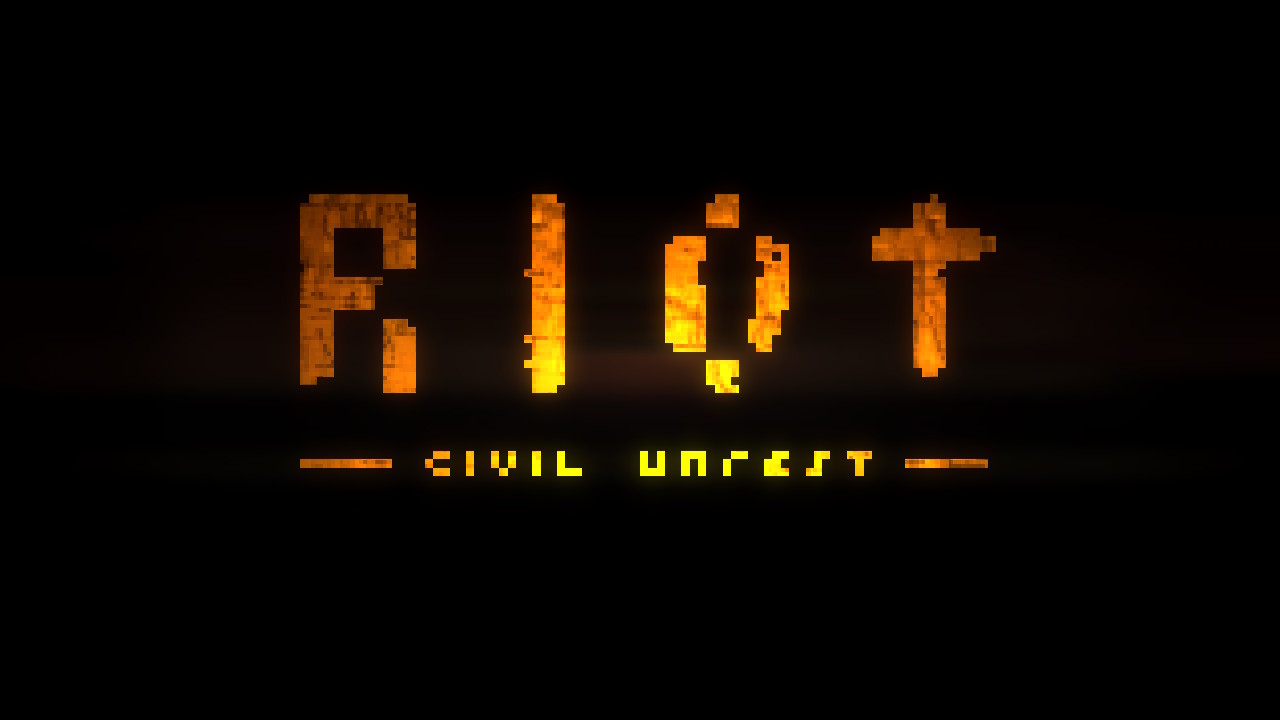Riot Civil Unrest
Nintendo Switch
Developed By: Merge
Games
Published By: Merge Games
Category: Simulation, Strategy
Release Date: 02.05.19
Riot Civil Unrest for the Nintendo Switch opens with a small message from the developers stating that their goal was to provide an unbiased look at the events depicted within the game. Riot places players in control of either the police or protestors at one of four controversial flashpoints throughout the world. Riot nominally asks its players to examine the events it recreates and draw their own conclusions about which side of the protest is just. It’s a fine idea, but the execution suffers from flaws that prevent the game from achieving the results it seeks.
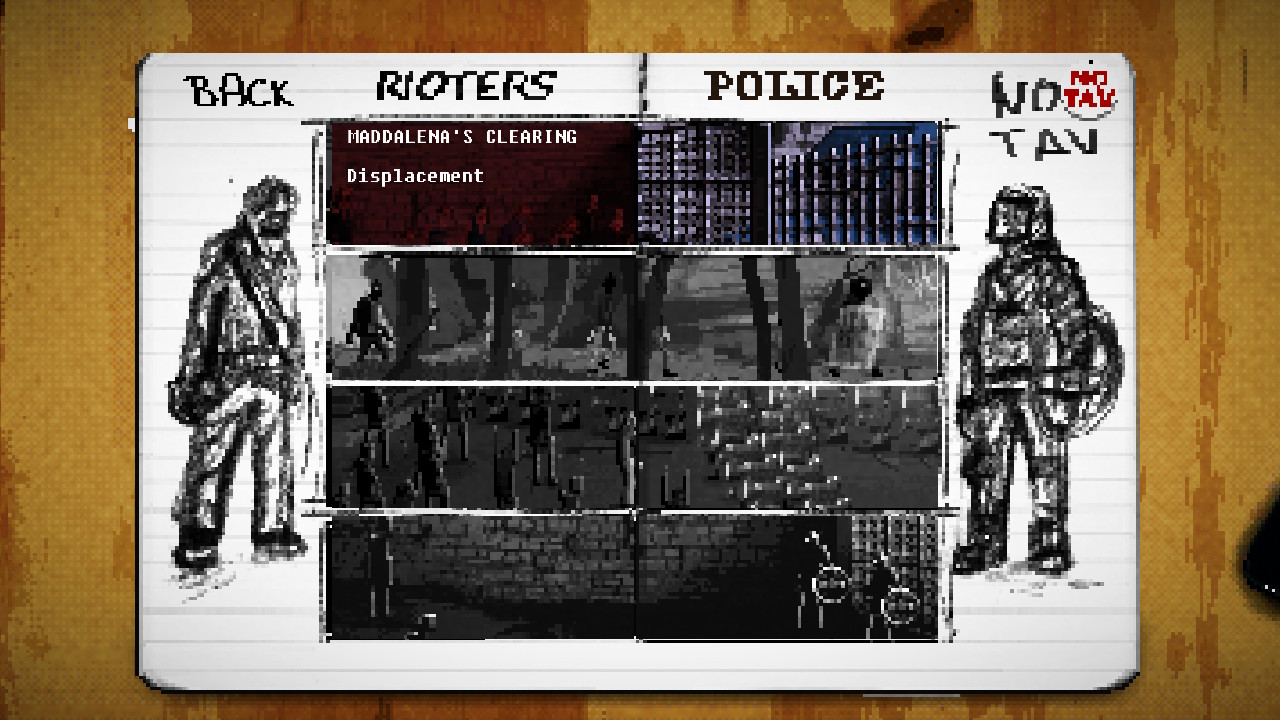
Cops and Protestors
Riot Civil Unrest follows the events of four different famous protests from around the world. Each event has multiple incidents that players can experience as either the police attempting to disperse the riots or the protestors attempting to have their voices heard. The four campaigns follow the Indignados of Spain, the Arab Spring in Egypt, the Keratea in Greece, and the NoTAV protests in Italy. Each level is preceded by some basic facts about the protests to provide a little background to the riots. Unfortunately, that’s all the game does to provide context for the events it depicts. Because you can choose to play as either side, the real-world consequences of the riots are not explored in any meaningful capacity which really takes the sting out of whatever commentary the game is trying to make. Or perhaps it isn’t trying to offer its own perspective, which is fine, but then you’re left with a morally empty game about rioting for the sake of rioting or suppressing protests for its own sake as well.
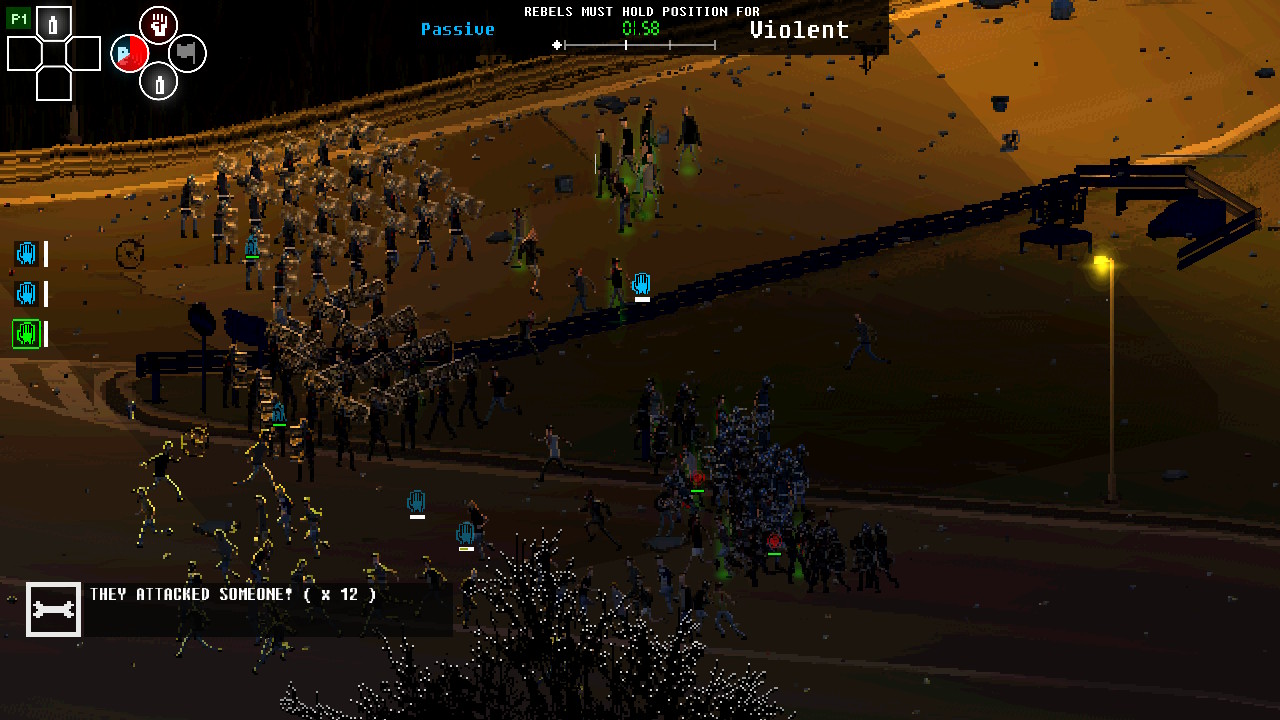
Different Modes, Same Results
Riot Civil Unrest consists of three different game modes. In Global you progress through the four different campaigns in order, unlocking new special units, items, and abilities with each level passed. After each level you get points for political and military reasons. Generally, the use of violence will increase your military score but decrease your political score. Using lethal force will dramatically harm your political score. If you’re playing as the police, using lethal force is generally enough to automatically lose, which is a major handicap. Basically, it means you can complete your objective and still lose the round, forcing you to play the level over again. You don’t even get the level clear bonus, which kind of sucks. Anyway, winning either side gives you a bonus for the next mission of the campaign; it can even carry over into multiple missions if you win enough levels in a row. Story is basically the same thing, except with preassigned items and without the military/political point bonuses. Versus has a longer list of levels, but doesn’t offer any of the background info for each incident that you get in Global or Story.
As I mentioned before, neither Global nor Story mode really fleshes out the conflicts; you are given a little background info but nothing that will really allow you to draw meaningful conclusions. You can play as either the rioters or the police, and the only difference is in your objectives. The story is missing a human element, which stops it from having the impact to which it aspires.
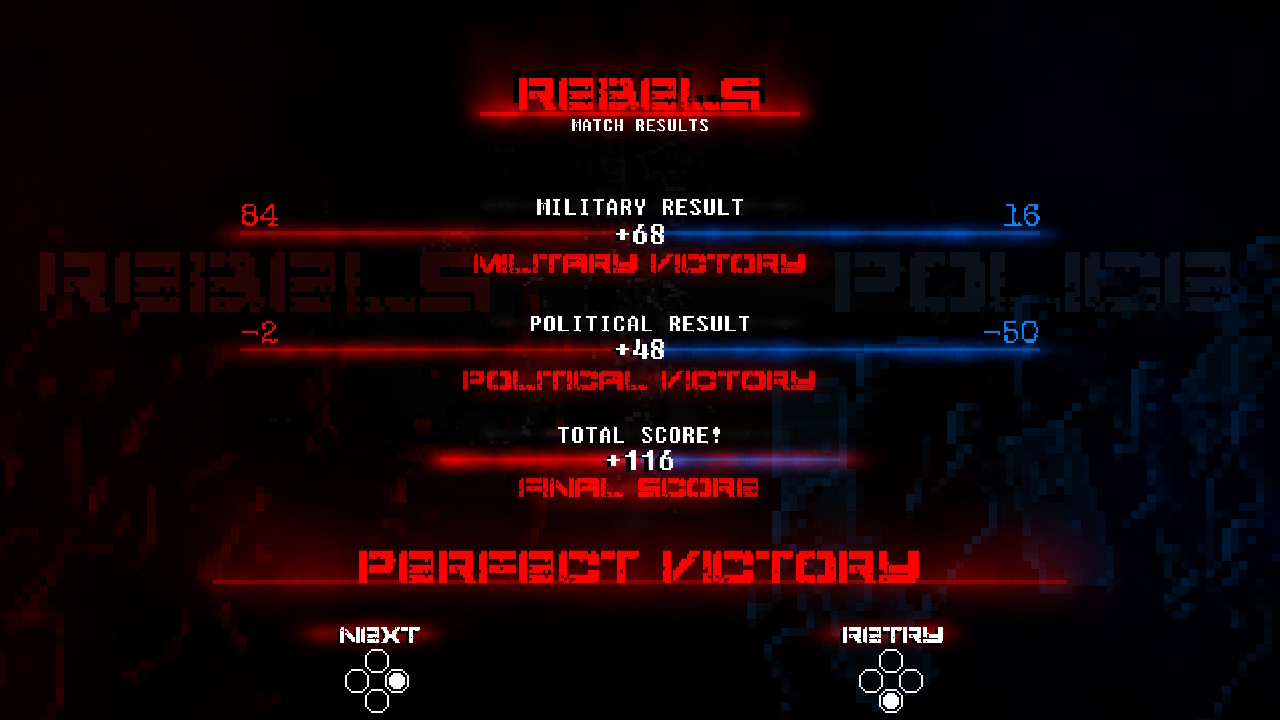
Strategic Chaos
The gameplay seems fairly simple, but I have to say seems because I really have no idea if I figured the game out correctly or not. Riot Civil Unrest has no tutorials, so its inner workings are tough to understand. You really have to teach yourself the game. There isn’t even any way to see the control scheme in-game that I have found. The interface is fairly easy to read, but some of the buttons you need to just press until you can figure out what they do. I lost a good number of riots trying to figure it all out. The items have descriptions you can see before the levels when you assign them, but using them is not ass straightforward. Things like auras for your special units are never really explained; I inferred some meaning to the violence/discipline auras they possessed, but it’s basically impossible to see what their effect is in-game.
But the gameplay basically boils down to a game of high-stakes Red Rover. You direct groups of protestors or police to advance into an area or keep the other group from breaking into yours. There are some special objectives, like destroying equipment belonging to the other side, but they’re variations on the same theme, really. You can switch between your squads and move them around or use their abilities as the situation demands. The different sides have different advantages or disadvantages; the protestors usually have greater numbers, but they are not as well-equipped or disciplined as the police and will break and run much more often.
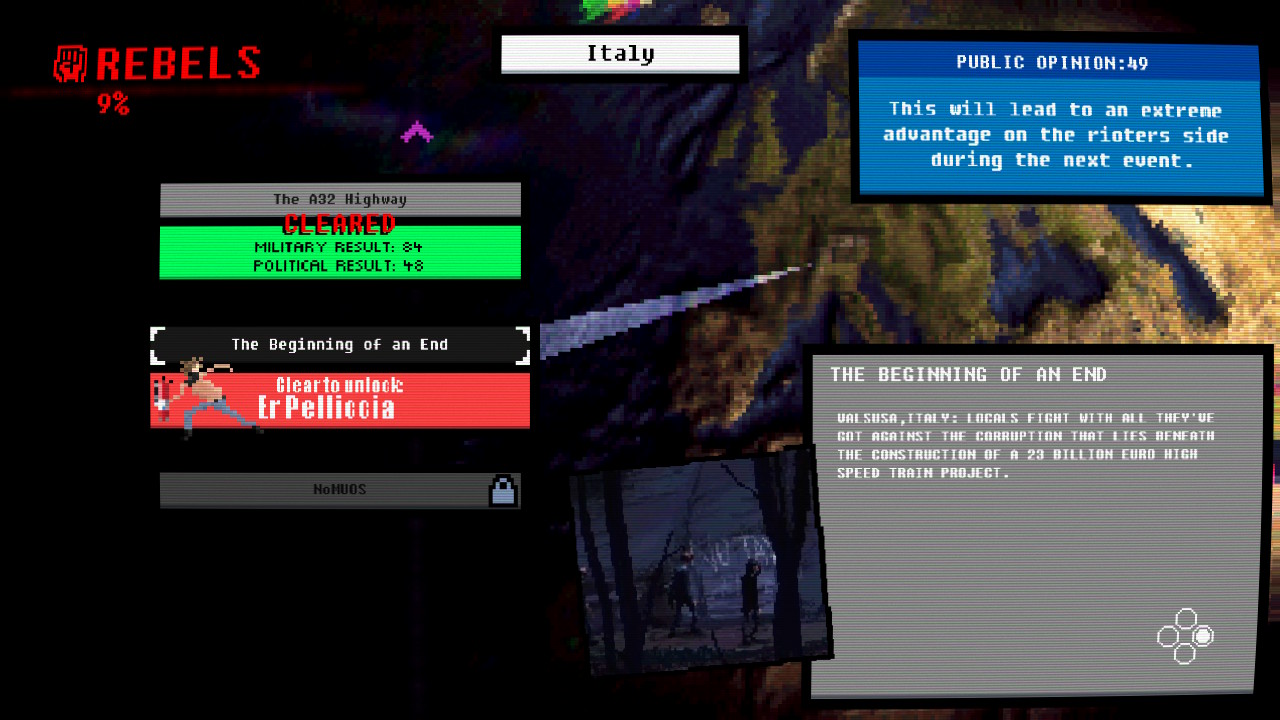
Technical Issues
I ran into a few technical issues during my time with Riot. The most common was inconsistent loading times. I don’t really think the load times were ridiculously long, they just weren’t consistent from level to level, or even from menu to menu. I don’t see why it would take 30 seconds or more to load a menu; it doesn’t seem like that should be very complicated. I also experienced a few freezes, all during a mission results screen. Since the game froze in the middle of the screen, I had to quit the game and play the whole level again. It happened to me three times, and it was not very fun. Additionally, the game crashed on me once during a mission. So the game needs a few stability updates.
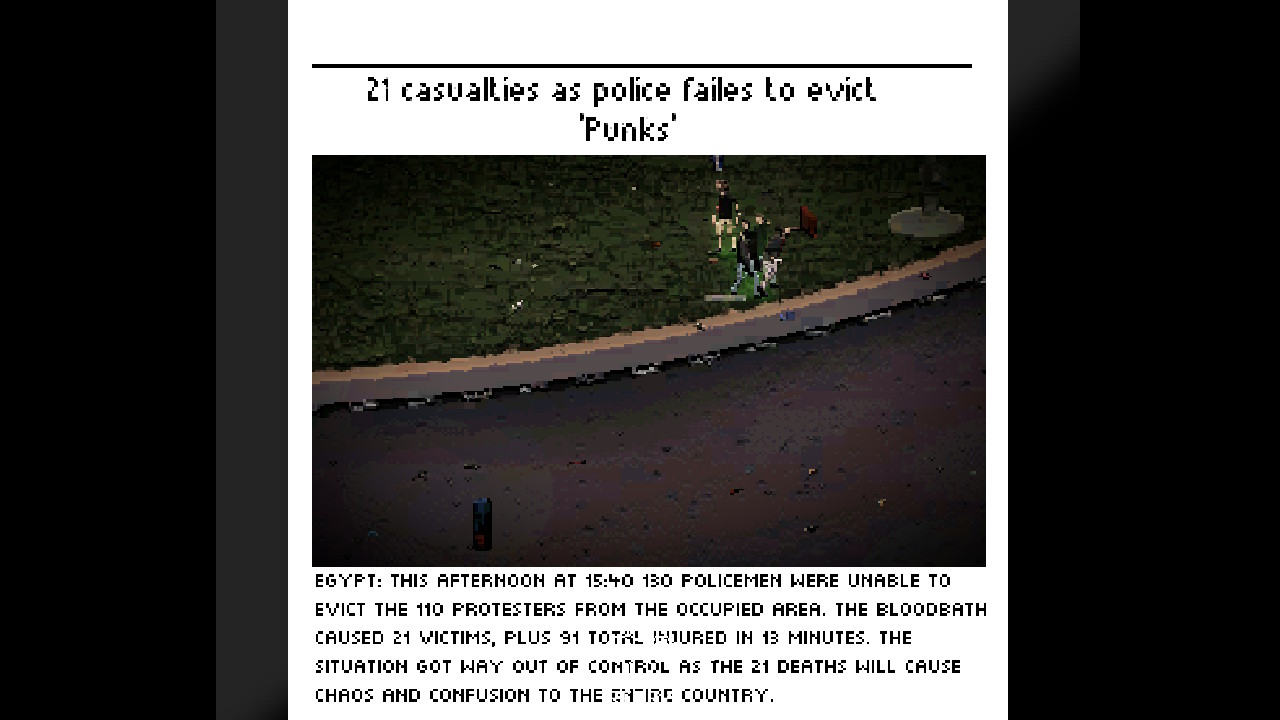
The Art of the Riot
As much as the gameplay and story leave something to be desired, Riot is an absolutely gorgeous game. It makes use of ultra-detailed pixel graphics to recreate the sites of the conflicts it depicts. The protestors and police are beautifully rendered and randomized. The backgrounds and levels are lavishly detailed. The visuals are basically perfect, is what I’m saying. The game’s audio track is similarly well-crafted. The music is tense and serious, but only plays in the menus. Once the rioting starts, you only get the sounds of people screaming and the chaos the conflict. The absence of music highlights the gravity of the scenarios and adds a sense of realism to the game, despite the pixel art style (which is still gorgeous, just not that realistic).
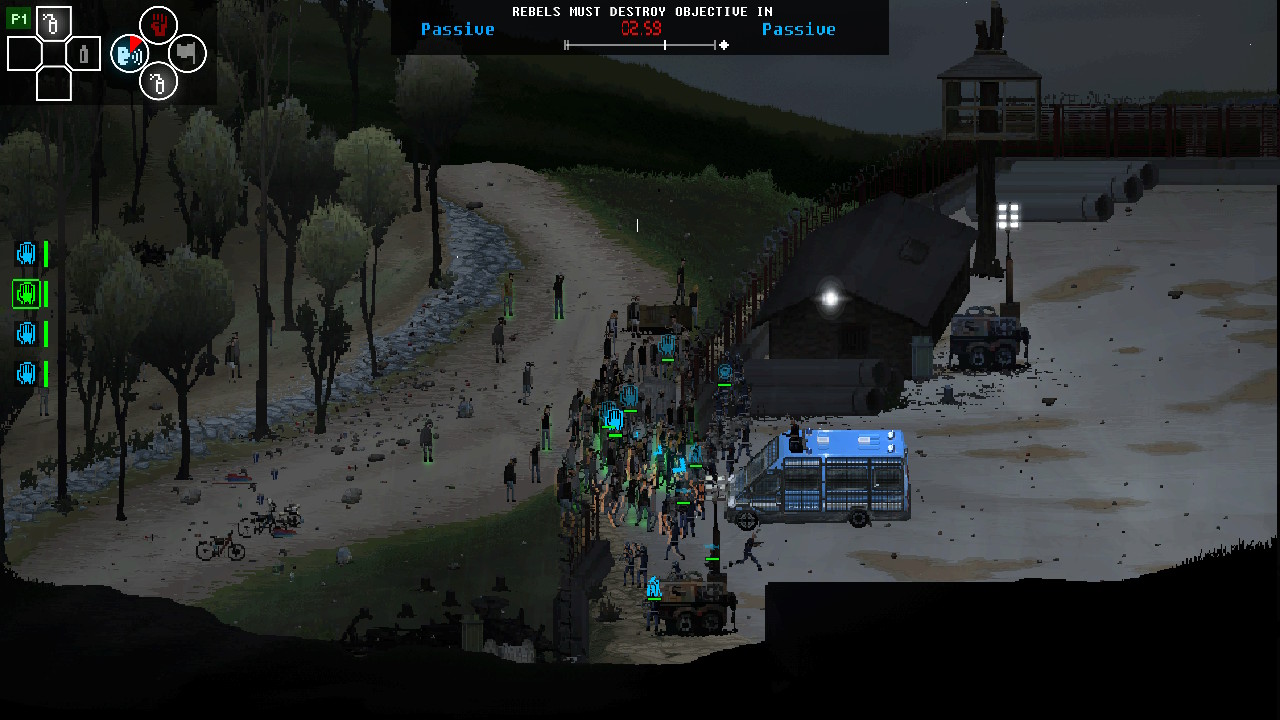
Playability
Riot Civil Unrest does not make use of either the Switch’s touch or motion controls, which is fine. I don’t think they would be intuitive or useful methods of controlling units anyway. The level of detail looked much nicer when I played it docked, so I recommend playing the game on your TV if you want to get the full effect of the game’s graphics. The gameplay is unaffected whether you play docked or undocked, so if you prefer one over the other you won’t really be at a disadvantage.
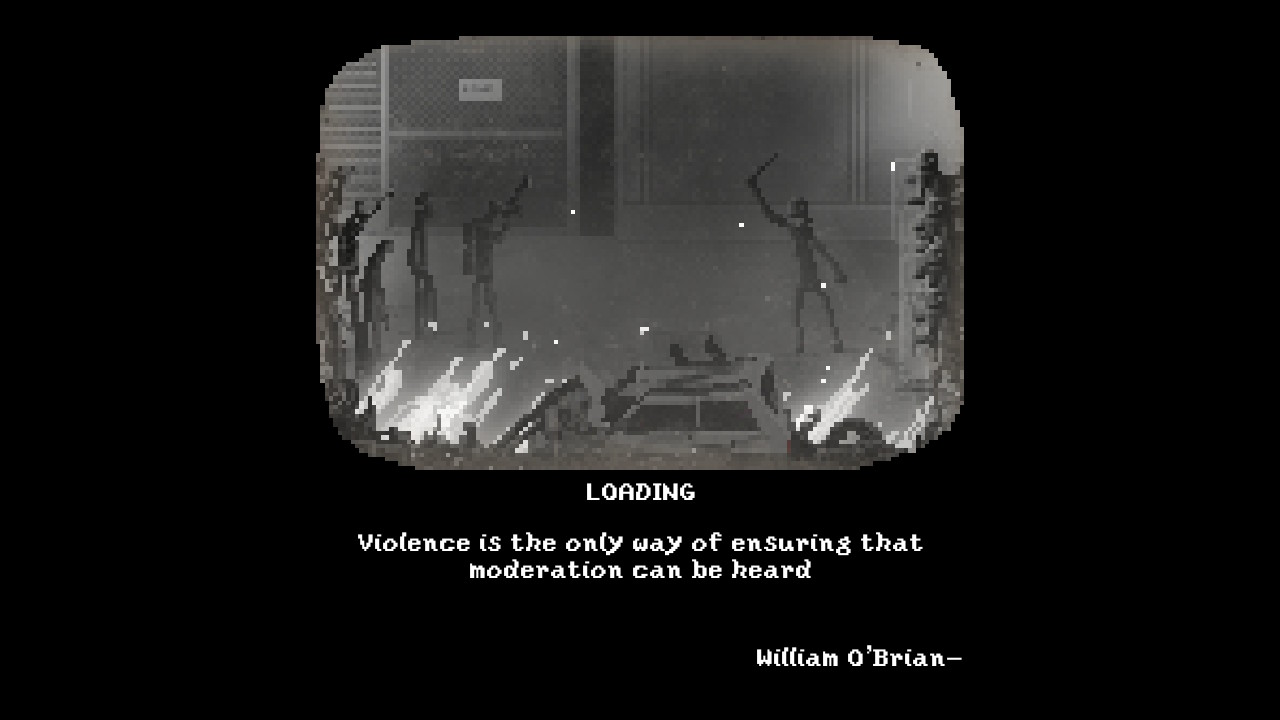
TL;DR: Gorgeous art direction derailed by unclear gameplay mechanics and some stability issues.





Buy Riot: Civil Unrest
$19.99
Follow Merge Games
[Review] Hello Kitty and Friends Happiness Parade – Nintendo Switch

Developed By: Dabadu Published By: Rogue Games Categories: Rhythm Release…

